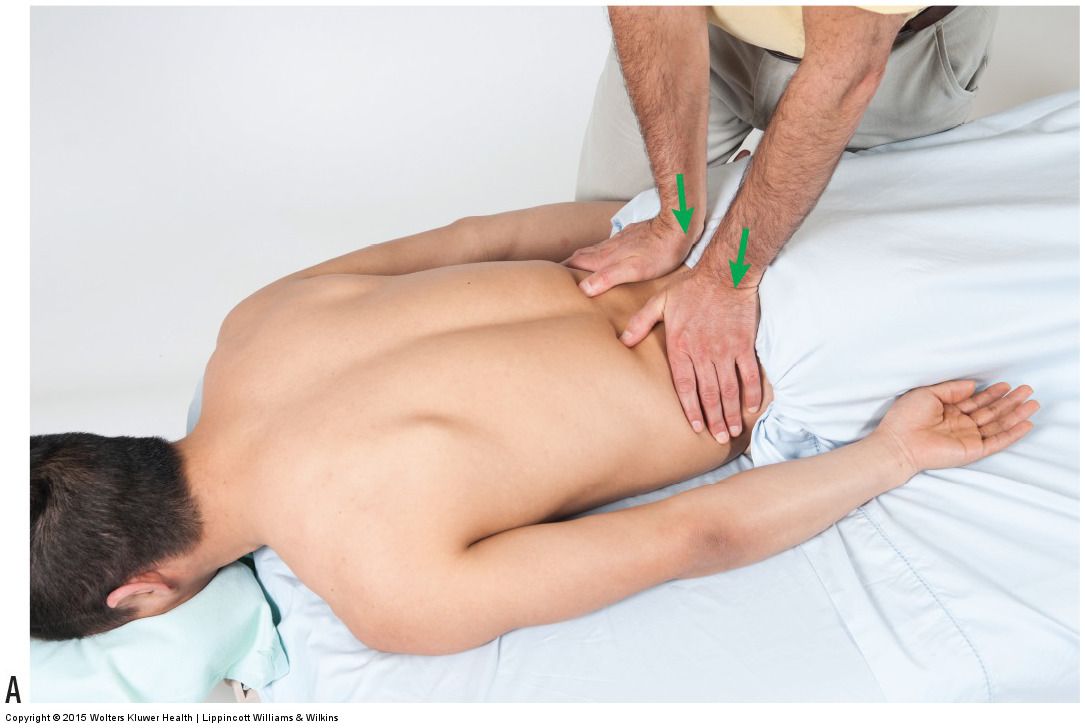This blog post article is part of a series of articles on assessment of the low back and pelvis. Scroll to the end of this article to see the others in this series.
Sacroiliac Joint Medley of Tests
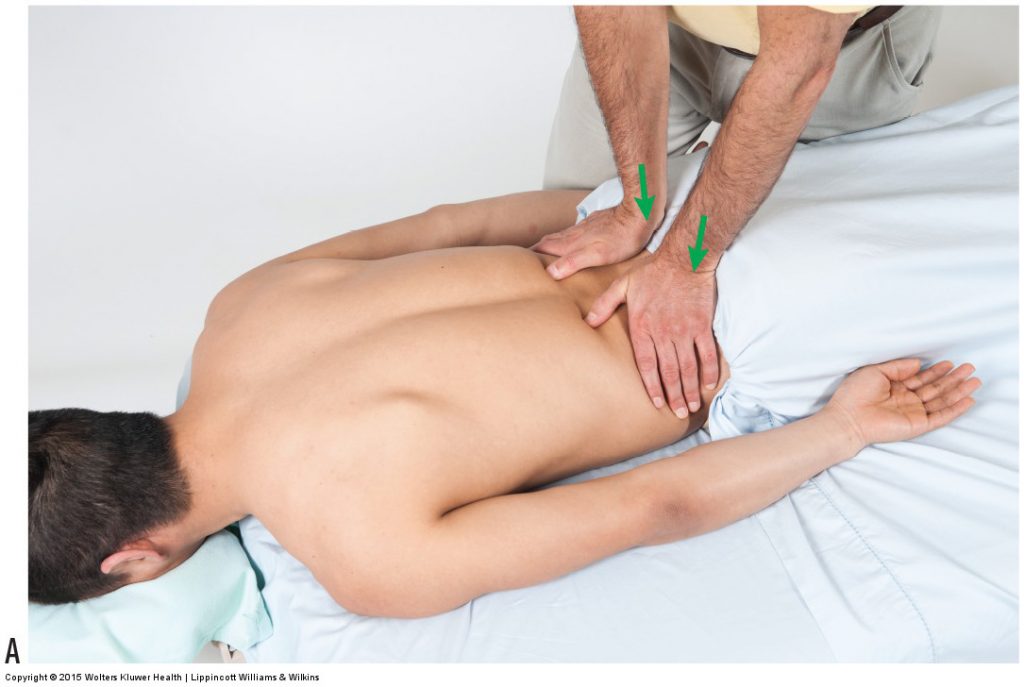
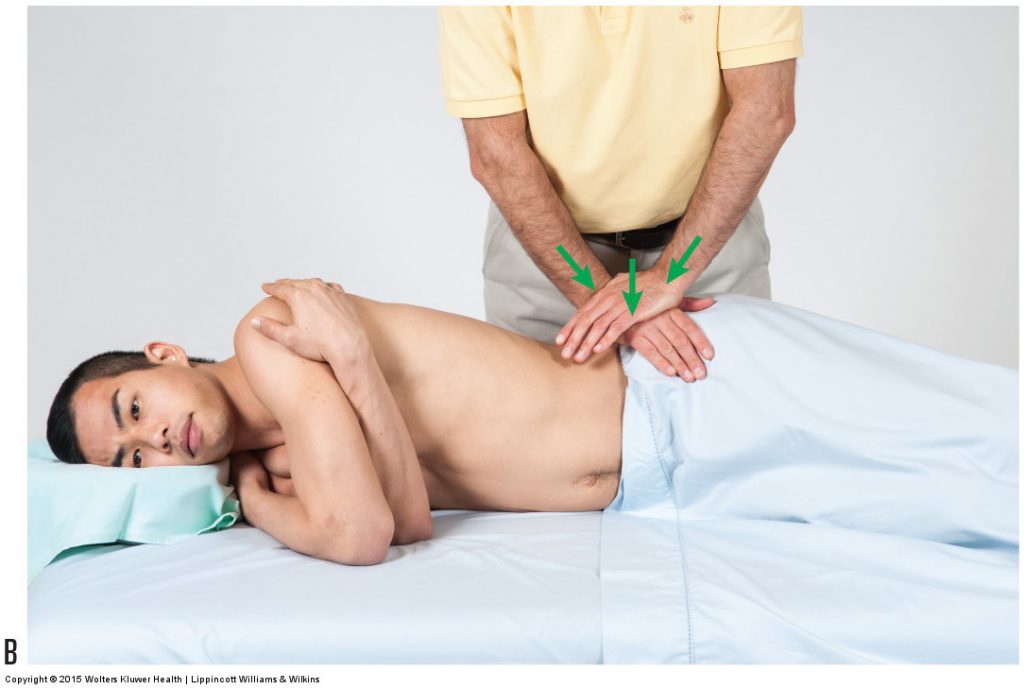
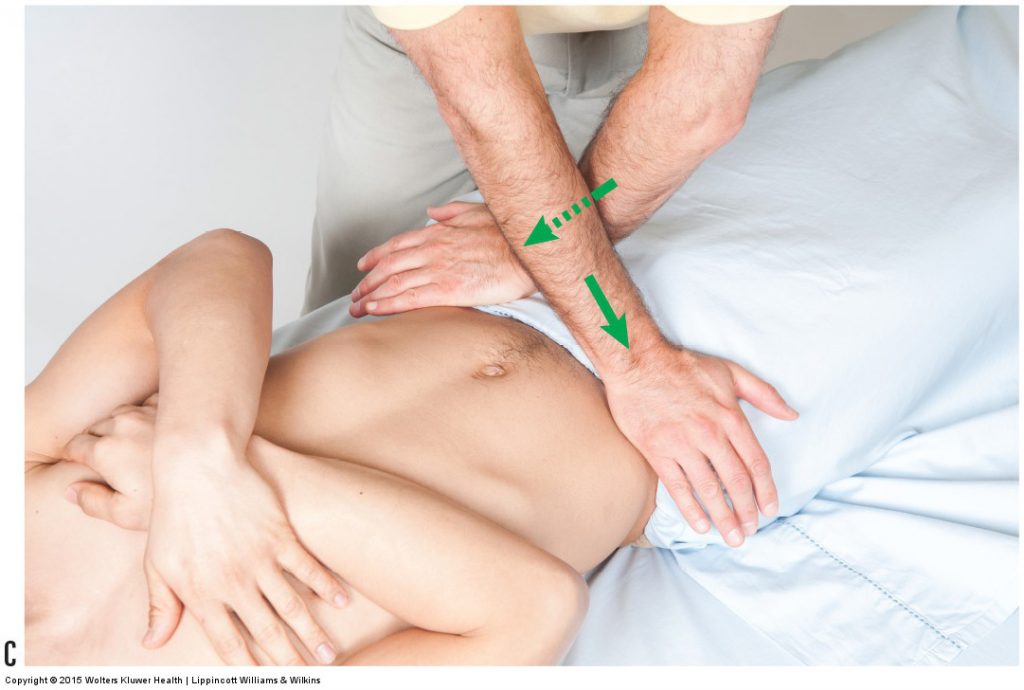
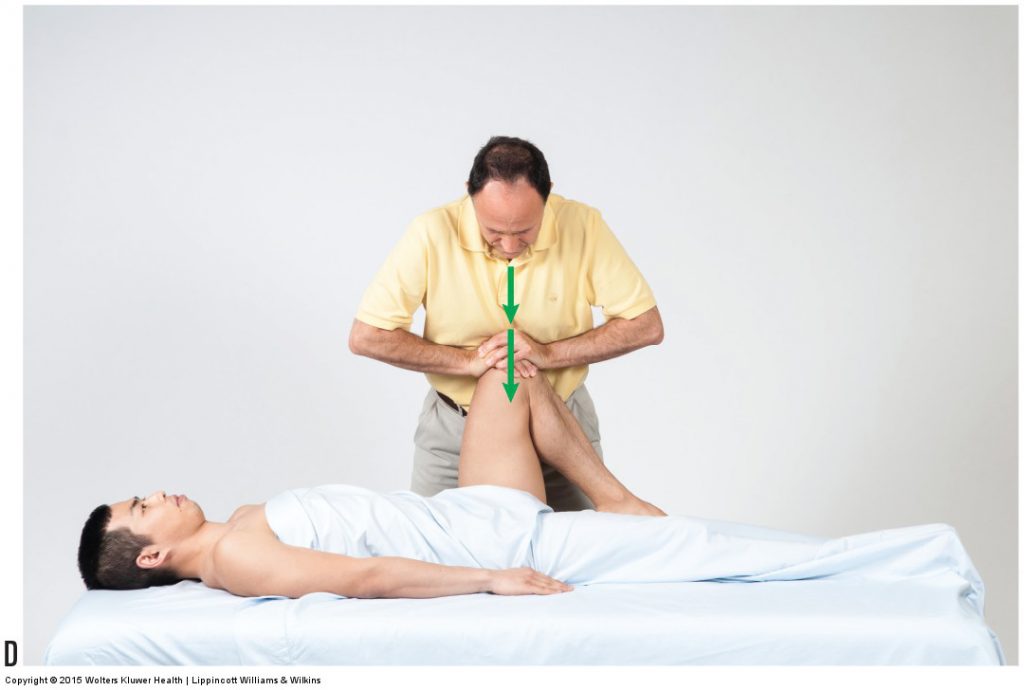
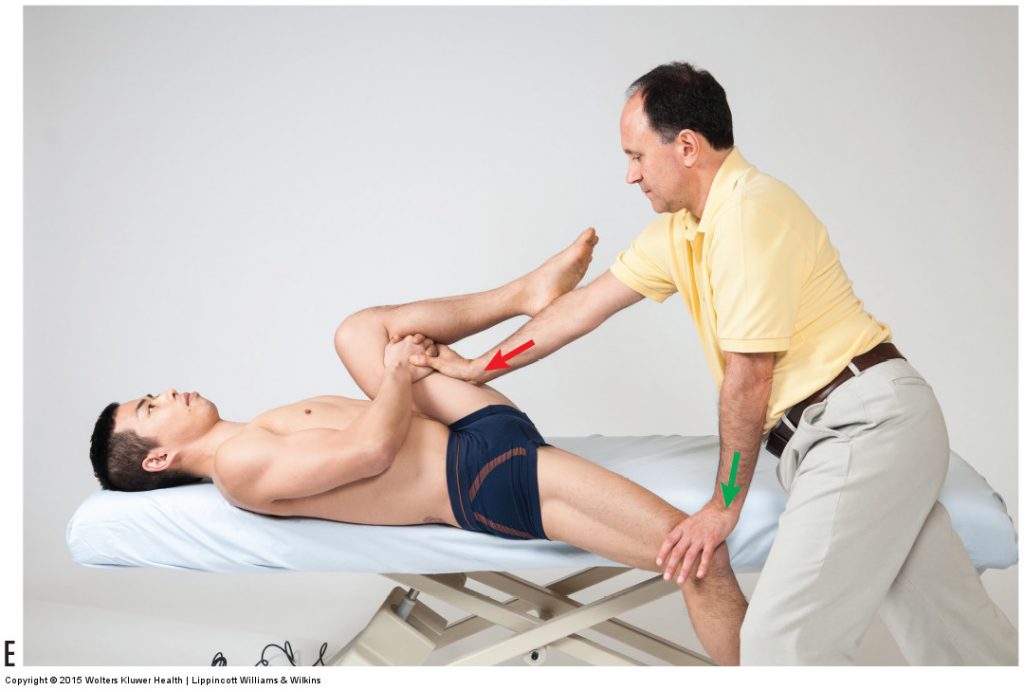
Figure 12. Sacroiliac joint (SIJ) medley of tests. If three or more of these five tests are positive, the SIJ is considered to be the causative agent of the client’s low back/pelvic pain. (A) PSIS compression test. (B) Iliac crest compression test. (C) ASIS compression test. (D) Thigh thrust test. (E) Gaenslen’s test. Permission Joseph E. Muscolino. Manual Therapy for the Low Back and Pelvis – A Clinical Orthopedic Approach (2015)
The sacroiliac joint medley of tests is a series of five assessment tests to determine if the sacroiliac joint (SIJ) is the causative agent of the client’s pain. It assesses if the SIJ is sprained and/or irritated/inflamed. If three or more of the five tests reproduce the client’s pain, the medley of tests is considered to be positive. Each test is considered to be positive if the client experiences pain at the SIJ.
The Five Tests Sacroiliac Joint Medley of Tests are:
- Posterior superior iliac spine (PSIS) compression test
- Iliac crest compression test
- Anterior superior iliac spine (ASIS) compression test
- Thigh thrust test
- Gaenslen’s test
PSIS Compression Test
PSIS compression test is performed with the client prone. The therapist places his hands on the client’s PSISs. Each PSIS is placed in the groove between the thenar and hypothenar eminences of the therapist’s hand (the intereminential groove), and the therapist then adds a compression force downward (Fig. 12A). Both SIJs are tested simultaneously with this test.
Iliac Crest Compression Test
Iliac crest compression test is performed with the client side-lying. The therapist places his hands on the client’s iliac crest and adds a compression force downward (Fig. 12B). This test primarily assesses the SIJ that is away from the table, although some compression force is transferred to the other SIJ, so it may elicit pain there as well. The test is usually performed again with the client on the other side.
ASIS Compression Test
ASIS compression test, thigh thrust test, and Gaenslen’s test are performed with the client supine. For the ASIS compression test, the therapist places his hands on the client’s ASISs. As with the PSIS compression test, each ASIS is placed in the intereminential groove of the therapist’s hand. The therapist then adds a compression force downward and somewhat laterally (Fig. 12C). Both SIJs are tested simultaneously with this test.
Thigh Thrust Test
Thigh thrust test is performed by placing a downward compression force on the client’s knee with the client’s thigh flexed to 90 degrees (Fig. 12D). This test assesses only the side where the pressure is applied, so it is repeated on the other side of the body.
Gaenslen’s test
For Gaenslen’s test, the client needs to be positioned far to the side of the table where the therapist is standing. One thigh is dropped into extension off the side of the table while the client hugs the other thigh into the chest. The therapist adds downward pressure on the thigh that is off the table, bringing it farther into extension. This stretches the client’s hip flexors, causing the same-side pelvic bone to anteriorly tilt. Having the client hug the other thigh into the chest posteriorly tilts and stabilizes the other pelvic bone. The therapist can add to this stabilization of the other side of the pelvis by pressing against the client’s posterior thigh (Fig. 12E). The mechanism for Gaenslen’s test is that torque is added into the SIJs by having one pelvic bone anteriorly tilted while the other is posteriorly tilted. Both SIJs are assessed with this test, but the dropped-thigh side is primarily tested. For this reason, Gaenslen’s test is usually repeated on the other side of the body.
This blog post article is the 15th in a series of 18 blog posts on the subject of assessment of the low back and pelvis.
The blog post articles in this series are:
- Introduction to Assessment of the Low Back and Pelvis
- Health History
- Introduction to Physical Assessment Examination of the Low Back and Pelvis
- Postural Assessment of the Low Back and Pelvis
- Range of Motion and Manual Resistance Assessment of the Low Back and Pelvis
- Muscle and Bone Palpation of the Low Back and Pelvis
- Joint Motion Palpation Assessment
- Overview of Special Orthopedic Assessment Tests of the Low Back and Pelvis
- Straight Leg Raise Tests for Space-Occupying Lesions
- Cough Test and Valsalva Maneuver
- Slump Test
- Piriformis Stretch Test
- Straight Leg Raise and Manual Resistance Tests for Strains and Sprains
- Nachlas and Yeoman’s Tests
- Sacroiliac Joint Medley of Tests
- Treatment Strategy for the Low Back and Pelvis
- Self-Care Advice for the Client with a Low Back / Sacro-Iliac Joint Condition
- Brief Review of Assessment and Treatment of Conditions of the Low Back and Pelvis


